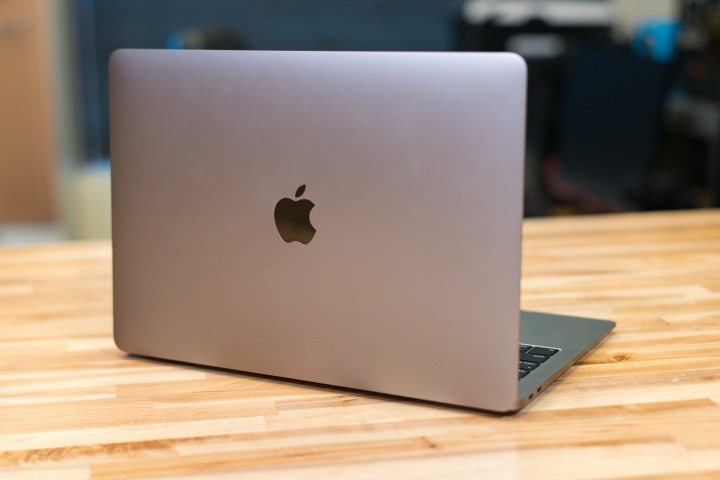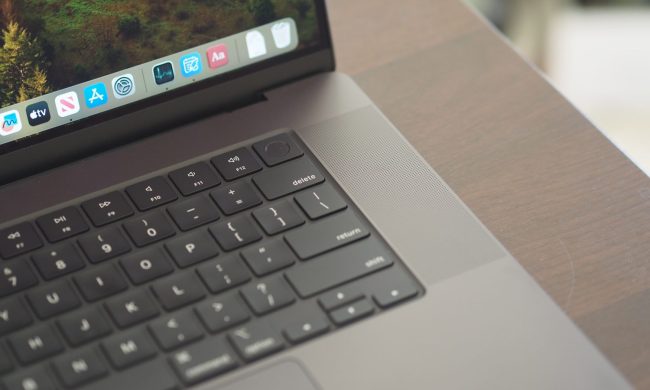Apple unexpectedly announced a new MacBook Air, and it feels like a meaningful update to Apple’s entry-level laptop. Though I haven’t tested it yet myself, there are a few things I love right off the bat — and a couple that bother me.
I love the keyboard

Apple’s butterfly-mechanism keyboards were a huge headache for the company. Apple finally reversed course with the 16-inch MacBook Pro last year, which brought back a more conventional scissor-switch keyboard, also known as the Magic Keyboard.
The new MacBook Air adopts that new (old) keyboard design, now offering 1mm of travel and inverted T-shaped arrow keys. It’ll make for a more enjoyable typing experience, but the real boon is reliability. With any luck, the Magic Keyboard will make the MacBook Air a laptop that’ll go more than a year or two before the keys start sticking.
I love the price
The MacBook Air has dropped to a starting price of $999 — $899 if you’re a student. The Air started at $1,199 when it relaunched in late 2018, before being cut to $1,099 last year. Now at $999, the price is where it should have been all along.
It’s a great price for an entry-level MacBook, matching the original MacBook Air back in its heyday. After the failure of the 12-inch MacBook, Apple stumbled in its recent attempts to reintroduce a compelling entry-level laptop. I’m glad to finally see a new, obtainable MacBook.
Starting at $999 also makes the new MacBook Air more competitive, matching alternatives like the Dell XPS 13. The base XPS 13 starts at $999, also with a dual-core processor, 8GB of RAM, and a 256GB SSD. There are more affordable laptops out there, but the premium build quality and design of the MacBook Air makes it a standout at this price.
I love the expanded storage

The MacBook Air’s price cut is even more impressive when you consider what it offers for $999. The entry-level model now has twice as much storage as before. Bringing it up 256GB of storage makes it far easier to recommend. The previous 128GB offering was weak in 2020.
The increase in storage continues as you configure the new MacBook Air higher. If you jump up to the Core i5 model, it now comes with 512GB of SSD storage for $1,299 and can be maxed out at 2TB. Not bad.
The base model still start with 8GB of RAM, it is faster memory this time around. The new MacBook Air uses 3,733MHz LPDDR4X memory as opposed to the 2,133MHz LPDDR3 used in the previous model. It can be upgraded up to 16GB as well. All that results in a more well-rounded machine that should perform better and last longer.
I don’t love the entry-level, dual-core CPU
Yes, the new MacBook Air has the option for quad-core processors, all the way up to the 10th-gen Core i7. That’s what Apple led with in the marketing. But if you opt for the $999 base model, as many people will, you still receive just a dual-core Core i3 processor. The MacBook Air most people will buy is still limited in its processor performance.
Dual-core processors aren’t useless, but they hit walls when it comes to multitasking and intensive applications. If you plan on running multiple 4K monitors and dozens and dozens of Chrome tabs, you may start to hit some hiccups. You’ll need to at least jump up to the Core i5 if that’s you.
Having a dual-core processor is especially frustrating when you consider the other processor options available. AMD now offers Ryzen 4000 processors with eight cores and sixteen threads in the same 15-watt power envelope. Even Apple’s own A12Z Bionic in the new iPad Pro features an eight-core processor.
I don’t love the new lineup

I just mentioned my dismay that the MacBook Air’s base model is still stuck at two cores. At the same time, however, the Core i5 and Core i7 models encroach on 13-inch MacBook Pro territory.
For $1,299, both the MacBook Air and MacBook Pro come with quad-core processors and 8GB of RAM. The MacBook Air has the newer keyboard, while the MacBook Pro has the Touch Bar. The Air has better integrated graphics and more storage, while the Pro’s processor has a slightly higher thermal design power that can offer better performance in certain situations. Knowing which to spend your money on at this price point requires a detailed chart of specs — and still, there’s no clear winner.
That could all change if Apple ends up launching an updated MacBook Pro later this week, as it’s rumored to. But even if the Pro gets a bump up to 10th-gen processors and a new keyboard, how is Apple going to explain the difference between these two machines?


